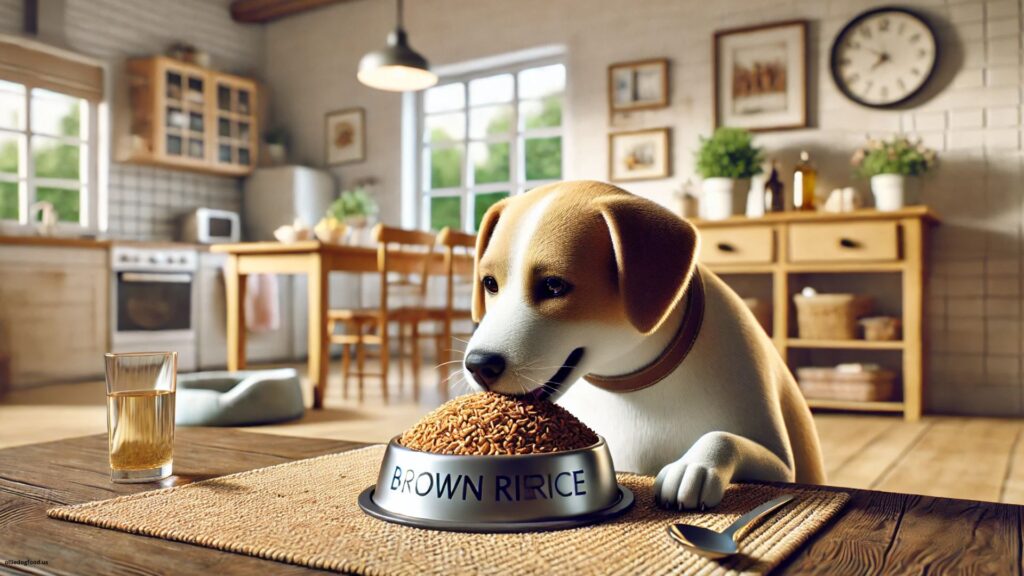Dogs with kidney disease require a special diet to manage their condition effectively. As pet owners, it is crucial to understand what foods are safe and beneficial for dogs suffering from this ailment. One commonly debated food item is brown rice. Can dogs with kidney disease eat brown rice? This question is vital for those looking to provide their pets with a balanced and kidney-friendly diet.
Brown rice, a whole grain, is often praised for its nutritional benefits in humans, but its suitability for dogs, especially those with kidney disease, needs careful consideration.
Why Is It Important?
Kidney disease in dogs, like in humans, significantly affects the body’s ability to filter and remove waste products from the blood. Proper diet management can help mitigate the disease’s progression and improve the quality of life for the affected dogs.
Understanding whether brown rice is suitable for dogs with kidney disease is essential because diet plays a pivotal role in managing this chronic condition. The right diet can slow down the disease’s progression, reduce symptoms, and provide much-needed nutrition without overburdening the kidneys.

Understanding Kidney Disease in Dogs
Kidney disease in dogs can be chronic or acute. Chronic kidney disease (CKD) is more common and is a progressive condition that can develop over months or years. It is crucial to identify and manage this condition early to provide the best care for your dog.
Symptoms of kidney disease in dogs include increased thirst and urination, weight loss, decreased appetite, vomiting, and lethargy. Regular veterinary check-ups and appropriate dietary adjustments are necessary to manage these symptoms and slow disease progression.
The Nutritional Profile of Brown Rice
Brown rice is a whole grain that retains its bran and germ, making it a rich source of fiber, vitamins, and minerals. It is often considered healthier than white rice due to its higher nutritional content. Brown rice contains manganese, magnesium, selenium, and a moderate amount of protein.
For humans, these nutrients contribute to overall health, but for dogs with kidney disease, the high phosphorus content in brown rice is a point of concern. Phosphorus can exacerbate kidney problems by increasing the workload on the kidneys.

Can Dogs with Kidney Disease Eat Brown Rice?
When considering brown rice for dogs with kidney disease, it is essential to consult with a veterinarian. Generally, diets for dogs with kidney disease are formulated to be low in phosphorus and protein, as these can strain the kidneys.
Brown rice, while nutritious, contains a higher phosphorus content compared to white rice, which might not be ideal for dogs with kidney disease.
Veterinary nutritionists often recommend low-phosphorus diets for dogs with kidney issues. This typically means opting for foods specifically designed for kidney health, which may not include brown rice due to its phosphorus content. Instead, white rice or other low-phosphorus grains might be suggested as safer alternatives.
Alternatives to Brown Rice
For dogs with kidney disease, it is crucial to find suitable dietary alternatives that do not compromise their health. Here are some alternatives to brown rice that are often recommended:
- White Rice: Lower in phosphorus compared to brown rice, making it a safer option.
- Sweet Potatoes: Rich in vitamins and minerals, and lower in phosphorus.
- Pumpkin: Provides fiber and essential nutrients with low phosphorus content.
- Specialized Kidney Diets: Commercially available renal diets formulated to support kidney function.
Managing Diet for Dogs with Kidney Disease
Managing the diet of a dog with kidney disease requires careful planning and regular consultation with a veterinarian. Here are some general dietary guidelines:
- Low-Phosphorus Foods: Opt for foods with reduced phosphorus levels to lessen the burden on the kidneys.
- High-Quality Proteins: Include proteins that are easily digestible and in appropriate amounts.
- Hydration: Ensure the dog stays well-hydrated, as kidney disease often leads to dehydration.
- Supplements: Consider supplements recommended by a vet to balance the diet and support kidney health.
FAQs
Can brown rice worsen kidney disease in dogs?
Brown rice is high in phosphorus, which can be detrimental to dogs with kidney disease as it adds to the workload of the kidneys. Therefore, it is generally not recommended without veterinary guidance.
Is white rice a better option than brown rice for dogs with kidney disease?
Yes, white rice is often a better option as it has lower phosphorus content compared to brown rice, making it less taxing on the kidneys.
What other grains are safe for dogs with kidney disease?
Grains like white rice, barley, and oats are typically safer options due to their lower phosphorus content.
How often should I consult my vet about my dog’s diet?
Regular consultations, at least every 6 months, are advisable to monitor your dog’s condition and adjust the diet as necessary.
Conclusion
Feeding a dog with kidney disease requires careful selection of foods to manage their condition effectively. While brown rice offers numerous health benefits, its high phosphorus content may not make it the best choice for dogs with kidney disease. Consulting with a veterinarian is crucial to determine the most appropriate diet for your pet.
Alternatives like white rice, sweet potatoes, and specialized renal diets are often recommended to support kidney health. By providing the right diet, you can help improve your dog’s quality of life and manage the progression of kidney disease.


